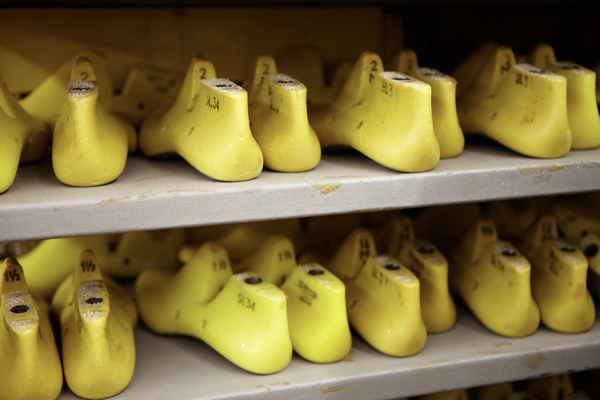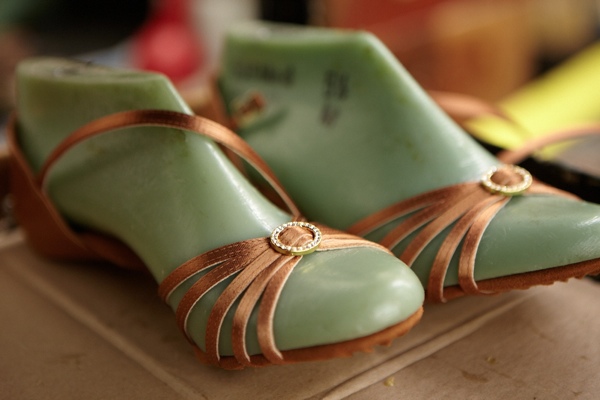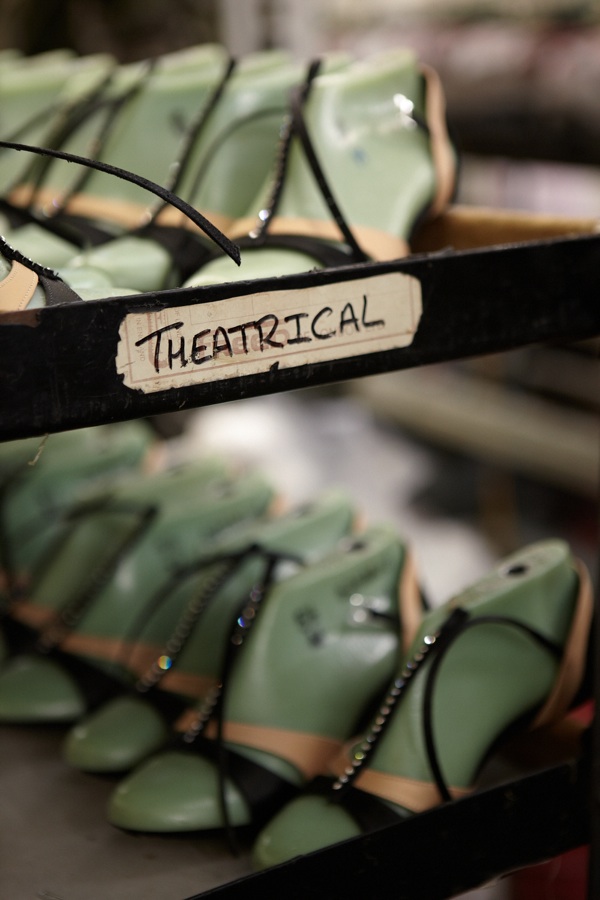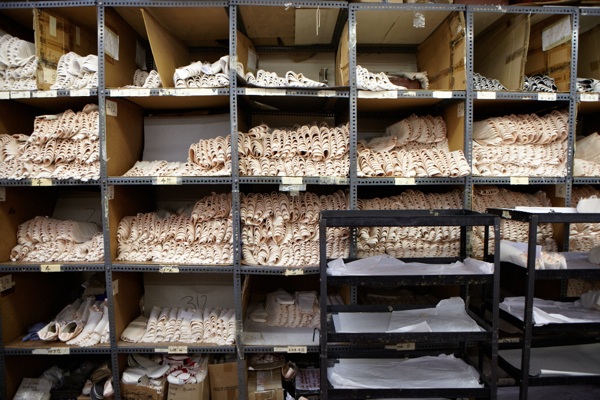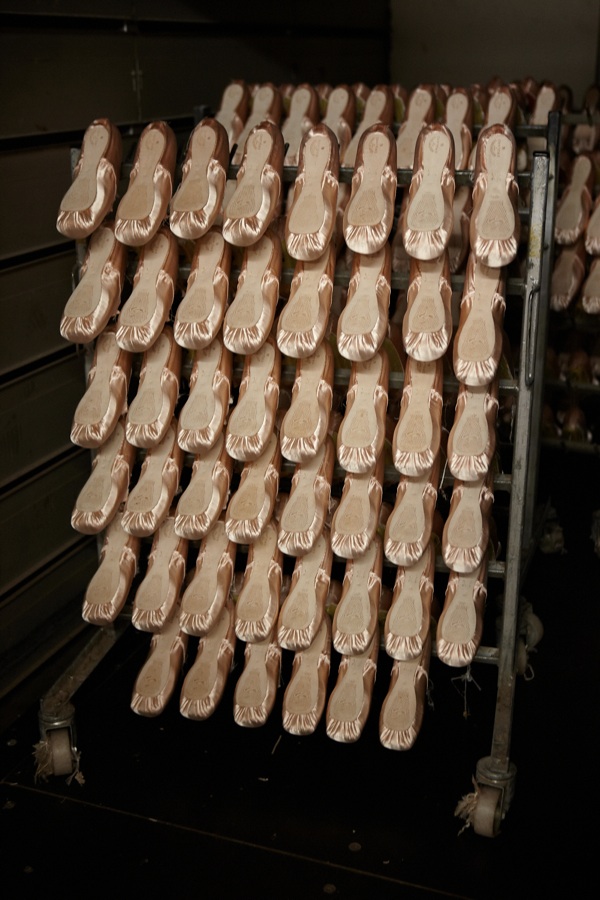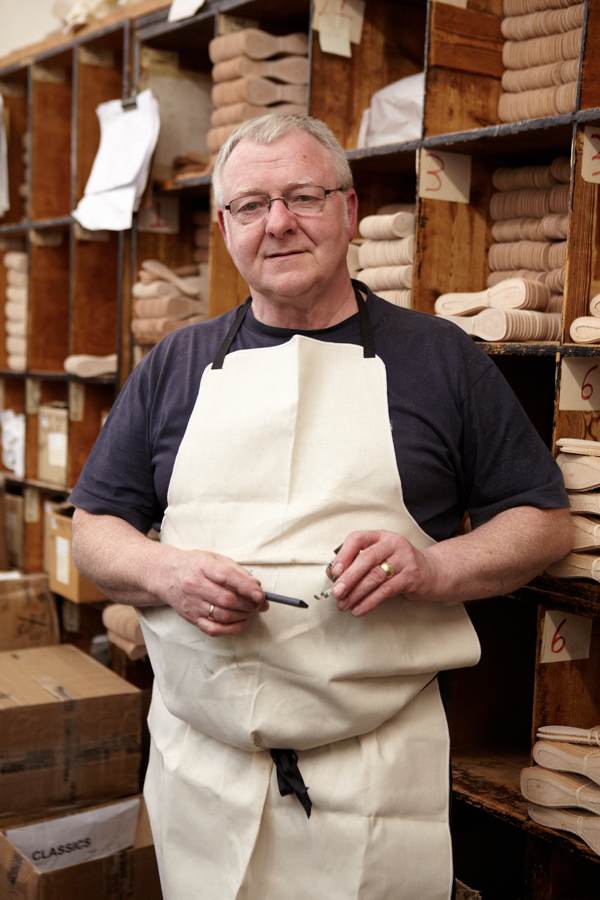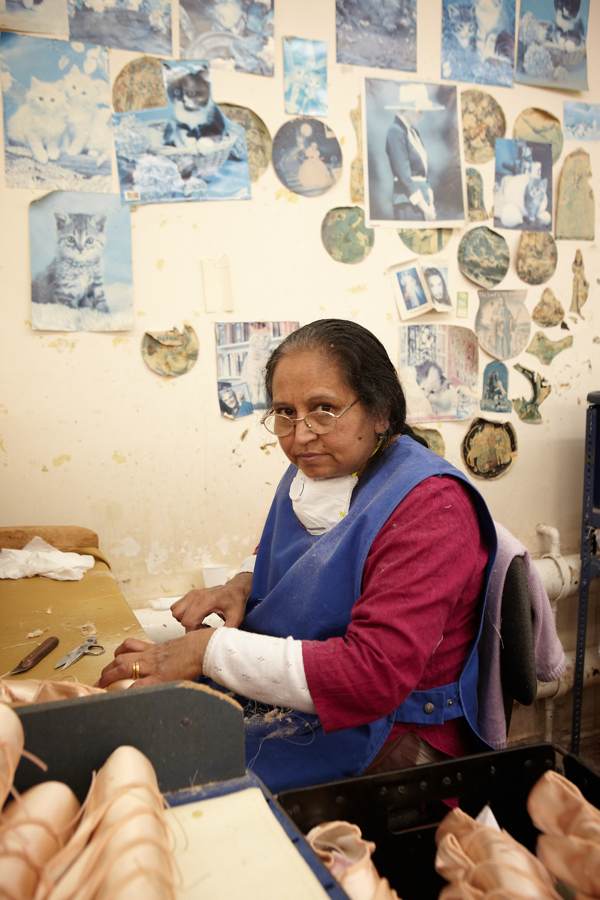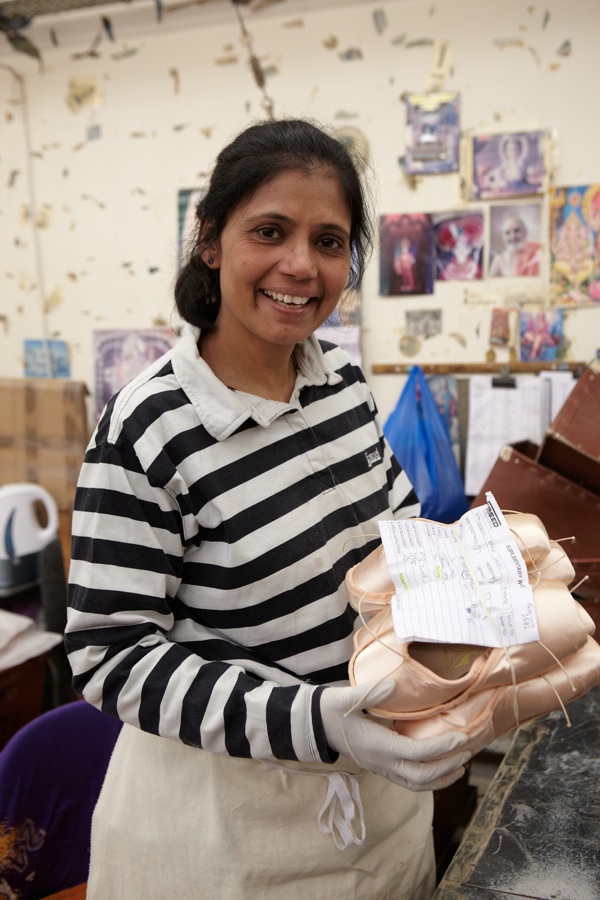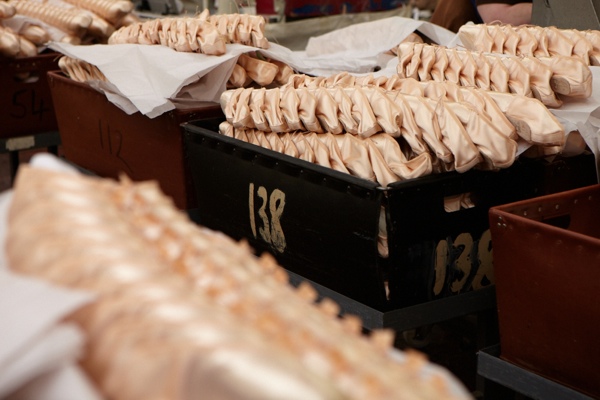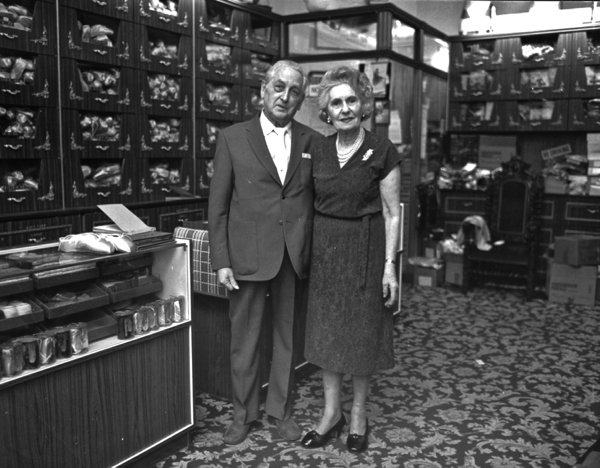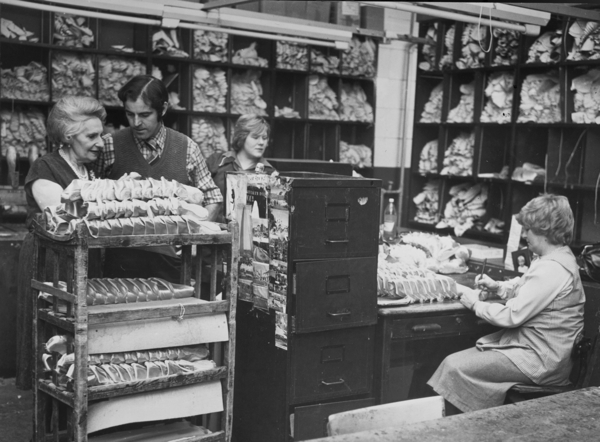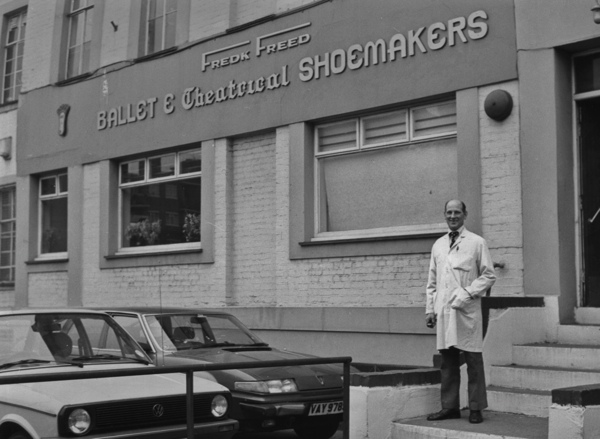The shoes worn by the world’s leading ballerinas are made in Hackney by Freed of London the pre-eminent shoemaker to the theatrical profession, producing more than one hundred and fifty thousand pairs a year to supply companies scattered around the globe.
Founded in 1920 by Frederick Freed, a sample shoemaker, and his wife Dora, a milliner, in St Martin’s Lane in a shop where the company still trades today, Freed’s introduced the notion of fitting ballet shoes to individual dancers’ feet where once only standard sizes were available. This simple decision revolutionised the production of ballet shoes, brought international success to Freed and delivered their first celebrity endorsement, when Moira Shearer wore a pair manufactured by Freed in “The Red Shoes.”
As you catch sight of the nondescript frontage of Freed of London’s factory in Well St, going past on the bus, you might not think twice about what lies inside. Yet there is a certain point within the building where you turn a corner and confront a breathtaking vision of more pink satin shoes than you ever dreamed of, piled up in various stages of manufacture. In the shimmering blend of daylight filtering through the skylights and the glow of the fluorescent tubes, the lustrous satin glistens with a radiant life of its own as if you were gazing upon seashells lit by sunlight refracted through crystal Caribbean waters. Even before they reach the dancers, the magic of the shoemakers’ art has imbued these shoes with a certain living charge just waiting to be released.
Until the eighties, Hackney was the centre of shoe manufacture in London with Cordwainers’ College training students in the necessary skills to work in the local factories. But the college and all the factories have gone, except Freed. Yet the most talented veterans gravitated to Freed and when Contributing Photographer Patricia Niven & I visited them yesterday, we encountered a proud workforce who are collectively responsible for the phenomenal success of Freed as the world’s leading maker of ballet and theatrical shoes.
We started in the Theatrical Department where shoes for musical theatre are made, overseen by Supervisor Ozel Ahmed who has worked here twenty years. At one end, designer and pattern cutter Jimmy Fenn worked in his cabin designing, next to the clickers who cut out the leather – and beyond them were a handful of people sitting at machines, sewing the pieces together with meticulous attention to detail. Ozel explained they only made five to seven hundred pairs of shoes a week in her department, as opposed to the three to four thousand which would get manufactured by the same number of people producing shoes for the fashion market. And then she took one of those shiny, strappy, diamanted confections that are barely-there, for which she is responsible, and bent it in half to show how soft and flexible it was. The shoe was a discreet masterpiece of elegant structure and subtly judged tension, strongly manufactured to suit the needs of a dancer performing nightly in musical theatre. “There is no single West End show without a pair of our shoes,” Ozel assured me confidently.
Next door in the Lasting Room where the different elements were assembled to complete the shoe, large machines dominated yet there were also plenty of people in evidence with pots and brushes, applying glue strategically. “Everyone in this room, you’re talking a minimum of thirty years’ experience,” revealed Ronny Taylor, the Lasting Room Foreman. Gazing around this room, there was a startling contrast between the battered industrial equipment and the perfectly glossy delicate little shoes, and I was fascinated by the long line of distinctive skills each applied to different aspects of the construction of them.
In the Ballet Department where pointe shoes were made, a different atmosphere reigned. There was no machinery at all and we had gone back more than hundred years to the working practices of the lone artisan using just three tools to make ballet shoes. I discovered the pointe shoe makers are a class apart within the factory – they work at separate personal benches, their employment is piecework and they are their own men, identified by the symbols they impress upon the shoes they make – such as Crown or Wine Glass or Fish.“There’s no wood in the block of a pointe shoe,” explained the shoe maker known as Crown, “just paper, card, hessian and flour and water paste.”
Every ballerina chooses a maker who makes her shoes according to her personal specifications and then will wear no other. I learnt of cases where ballerinas had refused to go on stage if a pair of shoes by their maker was not available. “They order thirty pairs at a time and a lot will only use them once, so they will be destroyed after a single performance,” admitted Crown who has been making pointe shoes for twenty-four years, whose daily output is forty-one pairs and whose clients include some of the most famous ballerinas alive. “It’s not how fast you go,” he told me, speaking of his productivity, “You must learn how to make the shoes and build up your rhythm before you can pick up the speed, because you’ve got to keep the quality of the shoes consistent.”
The nature of the specialised production process at Freed of London means that the contribution of every member of the team is crucial to the success of the company. It is a rare place where skills and old trades are prized, and wedded happily to the glamour of show business, ensuring that the artistry of the shoemakers of Hackney earns applause on stages throughout the world.
The theatrical shoe department at Freed.
Sanjay Sanjawah, panel trimmer
Ken Manu, heel moulder
Ozel Ahmed, supervisor in the theatrical shoes department - “Most of us have been here a long time. I work here because I love making shoes, it’s not about the money – it’s about the love of the trade.”
Shoe lasts numbered with sizes.
Jerry Kelly, Production Director
“one of those shiny, strappy, diamanted confections that are barely-there”
Worral Thomas, Hand Laster
Charlie Johnson, Side Laster
Four thousand pounds of pressure is exerted to join the sole to the shoe.
Ali Aksar, Sole Presser Operator
Jimmy Fenn, Designer & Pattern Cutter with some recent designs - “I’ve been in the trade thirty-five years. My job is fantastic because you never know what you are going to come in to in the morning. You can never get bored because you can always design a shoe. And when you spot them on television its really exciting.”
Once a week, flour and water is mixed to make the paste used to create the blocks for pointe shoes. A little insecticide is included in the blend to prevent weevils eating the shoes.
Satin and calico blanks at the start of the manufacturing process.
Ballet shoes are manufactured inside-out and then turned upon completion.
“Crown” has ballerinas who have been his exclusive customers for twenty-four years.
The maker’s mark of “Crown” upon the sole of one of his pointe-shoes.
Pointe shoes are baked overnight in the oven to dry out the flour glue.
Tony Collins, Machine operator has been with Freed for forty years. “The best thing about working here is that the people who are here stay here. We’ve got new ones but old lads too.”
Luthu Miah, Supervisor of the Binding Room.
Varsha Bahen, Finisher
Rashimi Patel, Pairing
Sheila (Pointe Shoe Finisher) & Philip Goodman (Chargehand) met on their first day work at Freed, forty years ago, and have been together ever since.
Frederick Freed and his wife Dora who founded Freed in 1920.
Dora in the factory in the seventies.
Frederick & Dora Freed outside their shop in St Martin’s Lane.
After the workers have left and the lights are switched out, the shoes lie waiting ….
Photographs copyright © Patricia Niven
Freed of London Ltd, 94 St Martins Lane, London, WC2N 4AT
You may also like to read these other stories about manufacturing in the East End
At James Ince & Sons Ltd, Umbrella Makers
At Drakes of London, Tiemakers





